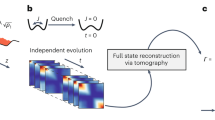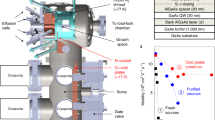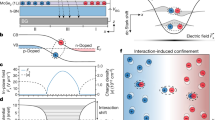Abstract
THE quantum theory, unlike classical theory, predicts a finite effective collision area for impact between gas atoms attracting with a mutual potential energy falling off more rapidly with distance than the inverse cube. It has been pointed out by Massey and Mohr1 that this makes possible a new experimental method for investigating the magnitudes and nature of these interatomic forces, namely, by direct observation of free paths by molecular ray methods using sufficiently high resolving power. Further, they have given a formula for the effective collision area for any inverse power law of force, from which the results of such experiments could be interpreted.
This is a preview of subscription content, access via your institution
Access options
Subscribe to this journal
Receive 51 print issues and online access
$199.00 per year
only $3.90 per issue
Buy this article
- Purchase on SpringerLink
- Instant access to full article PDF
Prices may be subject to local taxes which are calculated during checkout
Similar content being viewed by others
References
Proc. Roy. Soc., A, 141, 434 (1933) and 144, 188 (1934).
Phys. Rev., 48, 373 (1935).
Acta Phys. Chim. U.S.S.R., 2, 273 (1935).
Phys. Z., 35, 625 (1934).
C. and M. Cuthbertson, Proc. Roy. Soc., A, 84, 13 (1911).
Author information
Authors and Affiliations
Rights and permissions
About this article
Cite this article
MASSEY, H., BUCKINGHAM, R. Determination of van der Waals Forces. Nature 138, 77 (1936). https://doi.org/10.1038/138077a0
Issue date:
DOI: https://doi.org/10.1038/138077a0



